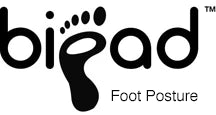|
1. Do remove your insoles from your shoes every night so they can air dry. This is particularly necessary if you sweat a lot.2. Do not put you insoles into water. If they get wet, remove them from the shoes and let them dry completely before putting them back in.
3. Do not put insoles in a washing machine or dishwasher. 4. Do clean your insoles with a clean, damp cloth only if they are dirty. Avoid rubbing them with chemical solvents or other cleaning agents. 5. Do not put insoles in the dryer. |
HOW TO ADJUST THE ELEMENTS OF THE INSOLES:

Arch support: Scaphoid pads provides medial arch support. Stick on scaphoid pad directly on the medial wall of the insole. They are adjustable, so remove and place them according to you foot support. Use scaphoid pad to reduce stress and tension on the plantar facia. Helps with over pronation, plantar fasciitis, post tib tendonitis, Heel pain, Heel spur, bunions.

Dancers pad: Dancers pads cushion the ball of the foot to reduce pressure. Cut out of the pad surrounds area under the big toe to re-distribute weight pressure away from the ball of the foot to relieve stress and discomfort. The location is always just proximal to the weight bearing surface of the ball of the foot. helps with sesamoiditis, morton’s toe, calluses, metarsalgia

Toe crest: Toe crest or buttress pad relieve forefoot pain and stress from the tips of your toes. It is anatomically shaped to contour to your foot and the base of the insole. In order to place the crest pad in the correct position, stand on the insole. Place the crest pad on the distal aspect of each toe and each metatarsal head. They are adjustable and can be placed to your comfort. Helps with claw toes, corns, hammer toes, mallet toes, overlaping toes,

Metatarsal pad: A met pad is used to help spread the transverse arch (the arch behind the ball of the foot that runs across the width of the foot. The key to placing metatarsal pad is to make sure they are pressing into the space behind the ball of the foot not under the ball of the foot. A sore foot from a metatarsal pad often means the pad is too far forward so just move it back a little. Use to redistribute pressure across the metatarsal heads. Helps with calluses, morton’s neuroma, metarsalgia, morton’s toe.
